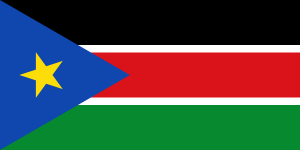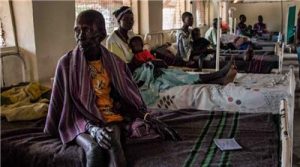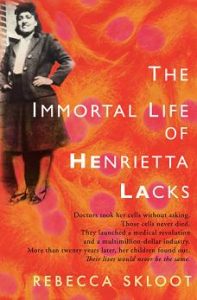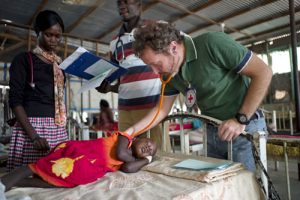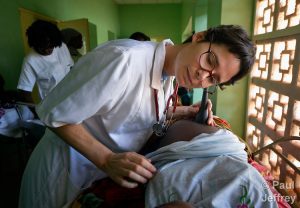Unlike typical hospitals and healthcare settings, vertical aid programs focus on a specific disease or intervention technique. Well and Good outlines a case in which a physician, Dr. Asadour, is set up in a town in South Sudan to run an anti-cholera vertical aid program with the instruction to only admit and treat cholera patients. All patients whose symptoms did not resemble cholera, under the guidelines of a vertical aid program, were turned away and sent to a crowded, limited-resources local hospital (Thomas, Waluchow, Gedge 267). Dr. Asadour was confronted with a variety of moral dilemmas surrounding the ethicality of vertical aid programs. If a patient is admitted and upon closer review it is determined that he or she does not have cholera, is it ethical to turn the patient away if they were already admitted? If the program center has the resources to treat serious conditions, such as meningitis, that don’t fall under the specific purpose of the vertical aid program, should they? Are vertical aid programs in it of themselves unethical?
It is well established that there are not unlimited resources when it comes to healthcare and treatment of patients, but how does one decide how and on who to allocate the resources? In deciding how to allocate money and medical resources, “policymakers will examine various diseases in terms of their communicability, frequency, cost, associated pain and suffering, and impact on length of life and quality of life, among other factors” (Beauchamp, Childress 280). It is this type of examination that leads to the start of vertical aid programs; healthcare professionals come up with a disease or intervention technique that appears to provide the best cost-benefit analysis in a particular area based on the above factors. While in theory this might be a smart way to approach healthcare and allocate limited resources, is it ethical? In the case of a meningitis patient, both bacterial and viral meningitis can be fatal if not treated immediately with antibiotics. This disease, which consists of inflammation of the meninges of the brain and spinal cord, is potentially fatal yet easily treatable by medical professionals, so should physicians involved with vertical aid programs that are not geared towards meningitis treat this patient (“Meningitis”)? According to the program’s guidelines, physicians should be turning these patients away, but do the principles of nonmaleficence and beneficence say otherwise? Physicians have a duty to help their patients and prevent them from harm, so personally I believe turning away patients that they have the resources to treat is unethical. While resources may be limited, I imagine that the antibiotics needed for meningitis and treatment of cholera patients require different resources.
What if upon admission the patient is discovered not to have cholera? I believe that the principles of beneficence and nonmaleficence speak even stronger to this situation; if they have already been admitted to the clinic, I do not think it is ethical for the physicians to then turn them away. This situation is reminiscent of the argument between withholding and withdrawing treatment we discussed earlier this semester in regards to life-saving treatments. It is one thing to not admit the patient initially (withholding treatment); however if you admit the patient, examine them, determine their condition and have the appropriate resources to treat them, how can a physician turn that patient away in good conscience? I believe the latter scenario is similar to withdrawing life-saving treatment from a patient against their wishes; if the physicians have the resources to save a life that wants to be saved, why wouldn’t they?
Ultimately I believe the duty of physicians to uphold beneficence and nonmaleficence should override the policy of vertical aid programs to only treat those with a specific disease using a specific technical intervention. While that particular disease may be a larger issue in that specific area, it will not be the only illness that plagues the people in that area. Even if resources are limited, if the physicians have the resources necessary to admit and treat patients with other diseases, I believe they have a responsibility to do so.
References:
Beauchamp, Tom L., and James F. Childress. Principles of Biomedical Ethics. New York: Oxford UP, 2001. Print
“Meningitis.” Mayo Clinic. Mayo Foundation for Medical Education and Research, 2017. Web. 14 Apr. 2017.
Thomas, John E., Wilfrid J. Waluchow, and Elisabeth Gedge. Well And Good: A Case Study Approach to Health Care Ethics. N.p.: Broadview, 2014. Print

